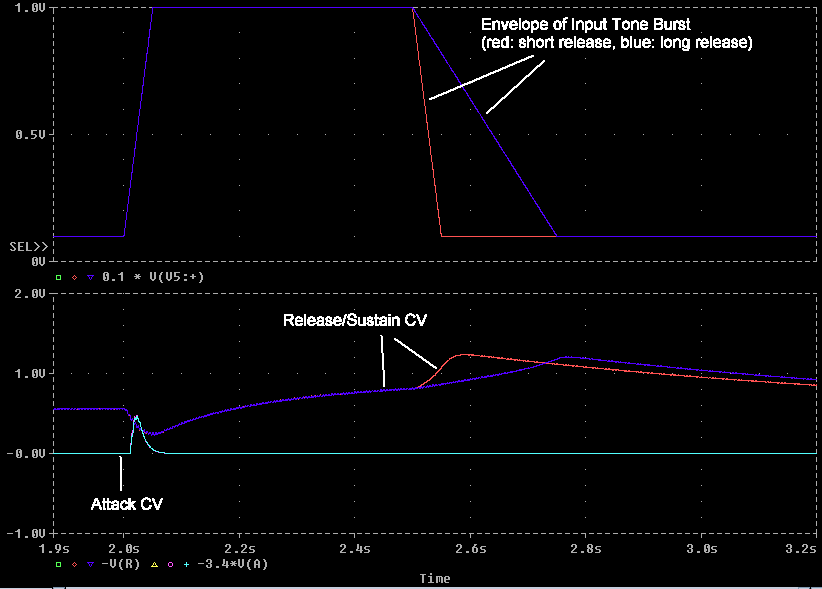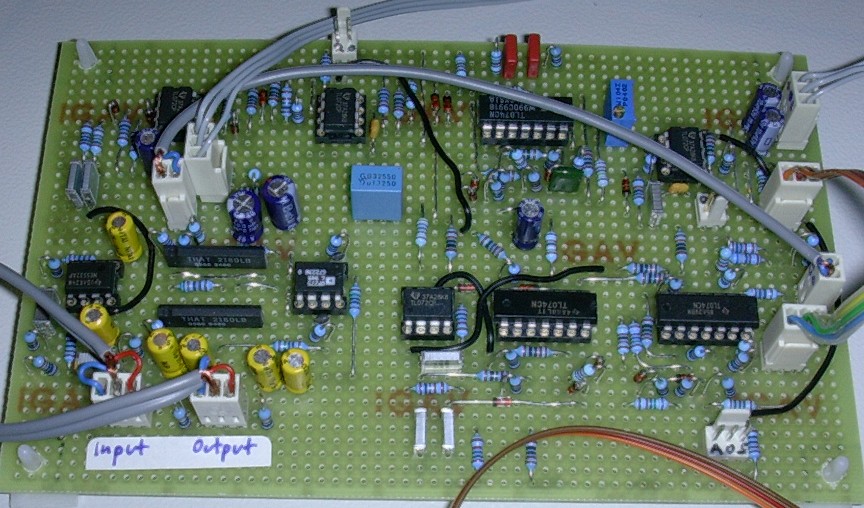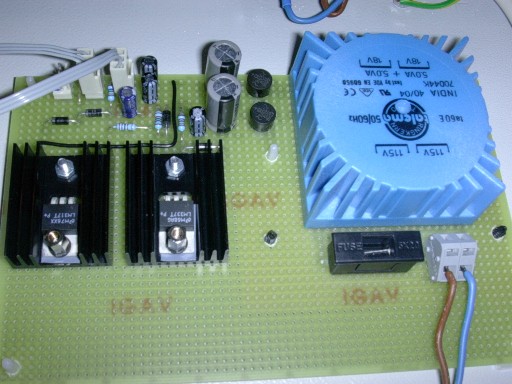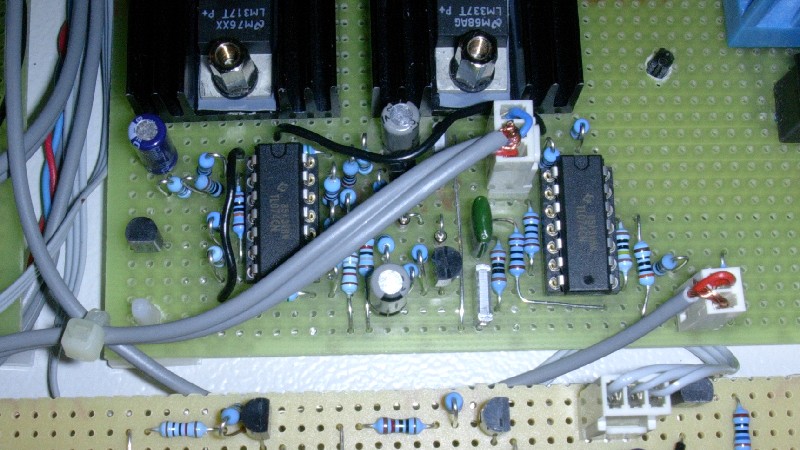
Spice Simulation of Transient functions
JH. Transient Gate -
A combination of Transient Shaper and Noise Gate, Voltage control and Randomizing features

Spice
Simulation of Transient functions
Looking
inside

Core
functions of Transient Processor

Power
Supply

Dual
Random Voltage Generator
Closeup
Inputs, Hard Bypass, Attack Pull-Pot
Voltage
Control, using Vactrols
A big Thank You to IJR, and to the friendly person who sent me corrections about some component values.
Thanks to SPL and Drawmer for giving inspiration with their original designs.
Please be aware that parts of the circuits presented here are the intellectual property of SPL (the Transient Designer part) and Drawmer (the Noise Gate side chain). The randomizing function is my own addition. The circuit drawings given here are (c) J. Haible 2005.
All this information is provided for strictly non-commercial, educational use, for the student and hobbyist only.
The basic functions of a Transient Designer and a Noise Gate can be found at the SPL and Drawmer links given above.
The Transient Designer allows control of the attack phase of an audio signal (increasing or decreasing the “punch”) and the decay/sustain phase of an audio signal (increasing or decreasing the “body” of the sound). This works to greatest effect on drums, but it’s also useful on other percussive sounds, such as guitar or e-piano.
This is achieved by controlling a VCA with very special envelope signals, allowing control with just a single potentiometer for attack and sustain each.
I found that decreasing the Sustain helps a lot to de-noise my Wurlitzer e-piano. Normally, the sound would decay so slowly on held notes, that at the end it would just drown in (the rather high level of) background noise. The transient shaping of the sustain makes the notes decay a little faster, and also pushes down the background noise dynamically. It’s a little bit like a downward expander (single ended noise reduction), only that there is no level setting required. But there’s a catch: As this works on transients, the noise floor will be back up after half a second.
That’s when the noise gate comes in. The Transient Designer gives the noise gate just enough “gap” to work comfortably.
Including a Noise Gate in the same box makes sense for another reason: Transient Designer and Noise Gate are the two most useful effects for drums. So you can also consider the whole circuit a “Drum FX box”.
With
the VCAs in the circuit already, it is easy to expand the circuit to
include other, more general dynamic functions. A noise gate is
possible with just a few extra opamps. And as this will go into a 19"
1U enclosure, there's a lot of panel space left for extra knobs. The
expo response of the VCA allows simple adding of the CVs from
individual sidechains.
This of course goes somewhat against
the easy two-knob approach of the original, but I think it’s
very useful to have a Transient Shaper and a Noise Gate in one box.
Still more looking into interesting additions: I thought of
making a dynamic High/Mid EQ function. The idea is not to boost that
region permanently (and raise the noise floor accordingly), but only
boost it in the Attack phase. (This idea is obviously inspired by
E-piano processing, too - but it may also make a lot of sense on
drums.)
I will probably not implement that last one right
now. But I will bring out the Attack and Sustain CVs to allow
controlling of Modular Synthesizer filters etc.
And
then there is another idea, which maybe pushes my version a little
further than just being a combination of cloned SPL and Drawmer
devices.
This dynamic processor is very efficient on
drums, for giving more "kick" (or less kick) with the
attack control, and more (or less) "body" with the sustain
control.
The amount of attack and sustain can be voltage
controlled by adding a Vactrol each, or any other kind of VCA, to
multiply the internally generated CVs with external CVs.
Now
it struck me that if you use random external CVs, you could possibly
give drums a good amount of "human touch", making each hit
a little different without (or in addition) to the usual humanizing
time variations.
I patched this up externally first, using a
Noise source, Sample & Hold, and a comparator for triggering from
the attack transient. Due to the not so optimal range and
distribution of the random voltage, the results were not overly
convincing yet, but they give a glimpse of what might be possible. A
(very preliminary) sound clip of this experiment is given here.
I’m currently working on a special S&H circuit that will go right into the Transient Gate. (See schematics below. Not built yet, as I’m writing this.)
The
whole box will then just have two extra switches, randomizing the
attack and sustain parameter. The attack and sustain potentiometers
would then be used to adjust the _maximum_ of possible processing.
With the switch turned off, the pots would work like in the original.
Too bad I have already had a front panel made. But I have
some pull-pots, so I’m using these. Wouldn't this be cool:
"Pull for humanize" !
Page 1: Transient Designer Core, plus Voltage Control
high resolution front panel graphics
to be continued ...